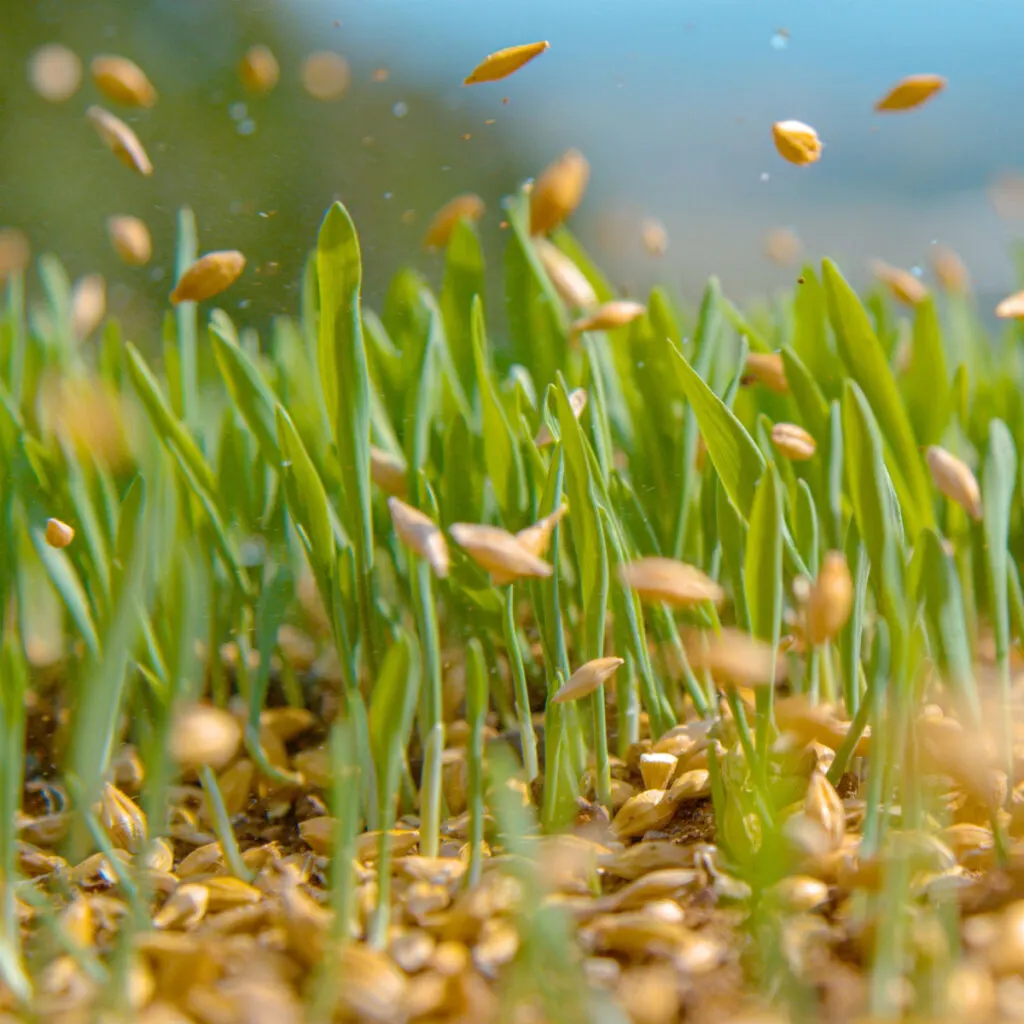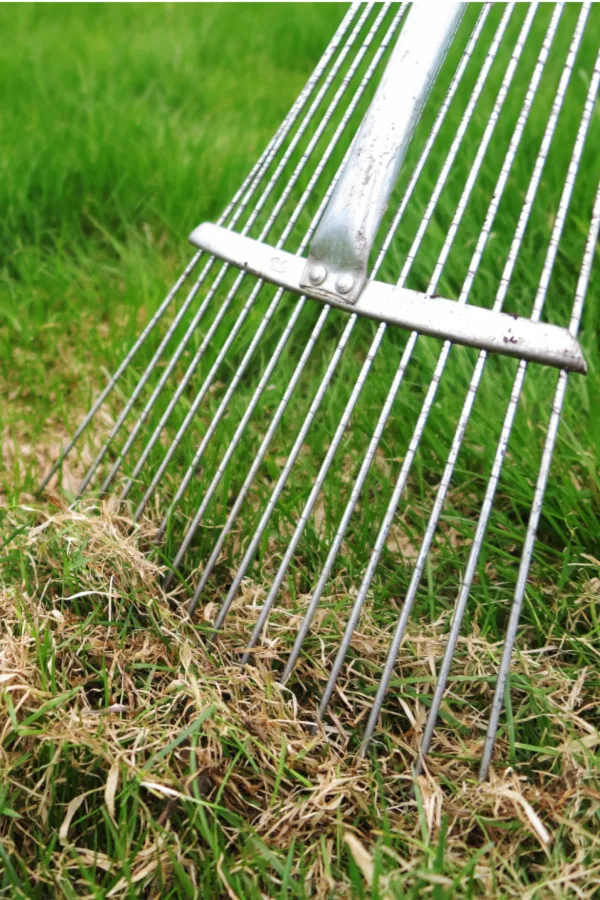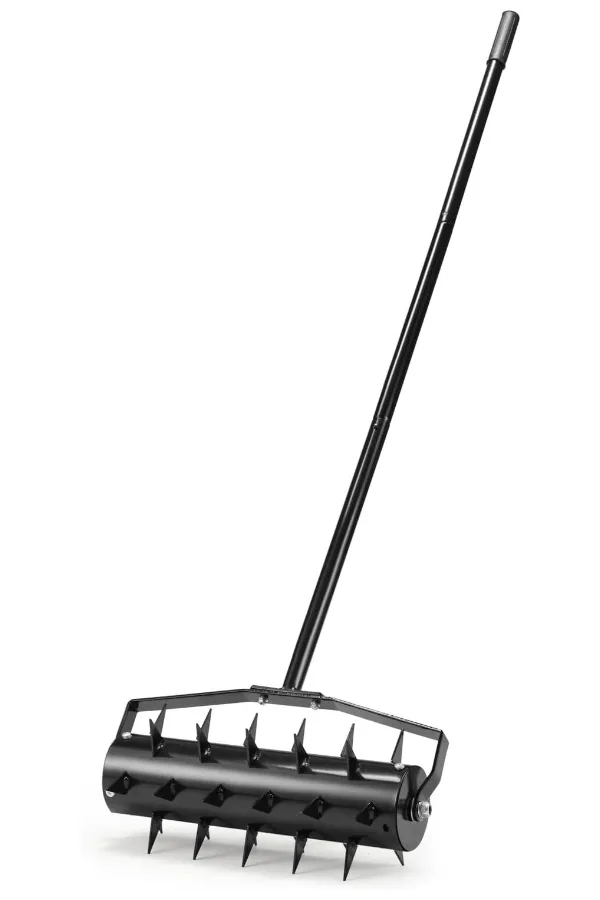If you are looking for the best way to finally get that thick, luscious lawn you have always dreamed of, then taking the time to overseed your lawn this fall is the perfect answer!
Autumn is one of the absolute best times of all to get your grass in shape. The cooler and often wetter weather that fall brings is ideal for getting new grass seed to grow. And even though you can plant grass seed in the spring and summer, doing so in the fall has the advantage of having winter behind it – which allows the grass to go dormant and rest even more before the hot summer arrives.
But what might make autumn even better for growing grass is that it also happens to be the best time for overseeding, which is by far the simplest of all methods for planting grass seed. After all, how much easier can be it to plant seed than to simply sprinkle grass seed right on top of your existing lawn?

But as easy as overseeding is to perform, it is the preparation before you seed that makes all the difference between success and failure. Do it right, and your lawn will fill in thicker than you can ever imagine. But skip a few key steps, and the seed will most likely will never take.
With that in mind, here is a look at how to overseed your lawn like a pro – and avoid three of the biggest mistakes that can keep it from working!
How To Overseed A Lawn In The Fall
#1 Always Dethatch Your Lawn Before Overseeding
Thatch is one of the single biggest culprits when it comes to keeping lawns from reaching their full potential. And it also happens to be a huge issue when it comes to getting new seed to germinate!
What is thatch exactly? Thatch is a layer of dead material that weaves together on top of your soil. It can be made up of old grass clippings, decaying leaves, old roots and even bugs. And can it ever weave together tightly! When it does, it prevents air, water and nutrients from reaching the soil below. It can also prevent new grass seed from reaching the soil too!

No matter how much seed you sow on top of your lawn in the fall, if you have a heavy layer of thatch present, it simply won’t be able to grow. Even if it happens to sprout on top of the thatch, the new seed’s roots will be unable to penetrate below, killing the blades off before they can mature.
If you have small areas, thatching can be as simple as using a metal rake. There are also specific rakes make for dethatching that make the job quick and easy. You can also rent mechanical units from local tool rental shops for larger yards. Product Affiliate Link : Dethatching Rake
But whatever you do, if you will be overseeding this fall – make sure you get rid of the thatch first!
#2) Don’t Forget To Aerate! – How To Overseed A Lawn In The Fall
Of all fall lawn chores, aerating is probably the most over-looked task. And if you will be overseeding your lawn, it is a must for success when overseeding!
Aerating is the process of puncturing the soil to create space for air and water. And when overseeding, it also opens up the soil for seed as well. Together with dethatching your soil, the two tasks set the perfect stage for new seed to grow.
Although you can rent large machines that drill deep holes, aerating doesn’t have to be that complicated. Small rollers with spikes can open your lawn up quickly and easily – and without all of the clean-up that the machine aerators leave behind. Affiliate Product Link : Aerating Hand Lawn Roller

The key is to simply clear away the thatch in your lawn, and then open it up a bit for seed, water and air to work together to fill in the lawn. One thing is for sure, it’s a step that you do not want to skip if you are overseeding!
#3) Mow Low Before Seeding – How To Overseed A Lawn In The Fall
In addition to removing thatch and aerating your lawn, the third and final important task to do before seeding is to mow your grass low. Unfortunately, too many leave their lawn high when overseeding. When they do, it makes it making it tough for the seed to germinate.
Mowing low actually helps the new seed in two very important ways. First, mowing lower allows the seed an easy path to the soil below. If the grass is too high, the seed can often get caught up and not even make it to the soil below.
But even more, lowering your mowing height allows light to get to the seed. And grass seed needs sunlight to help it both germinate and grow.

How low should you mow? For best results, mow your lawn to a height right around two inches high. Anything lower and the lawn can dry out too quickly from the sun. Anything higher and it starts to block sunlight.
Now all that is left is to spread that seed and let it grow! Here is to overseeding this fall – and to having an amazingly thick lawn to enjoy all next year. To see more information on what to do to get your lawn ready for winter, see How To Mow Your Lawn For The Last Time – Before Winter Arrives! And for more fall gardening tips and tricks, check out our Fall Garden & Landscape category on the website.
Follow Our Facebook Page For Great Gardening Tips And Advice! This Is My Garden Facebook Page
This Is My Garden is a garden website created by gardeners, for gardeners. Jim and Mary Competti have been writing gardening, DIY and recipe articles and books and speaking for over 15 years from their 46 acre Ohio farm. They publish three articles every week, 52 weeks a year. Sign up today to follow via email, or follow along!
